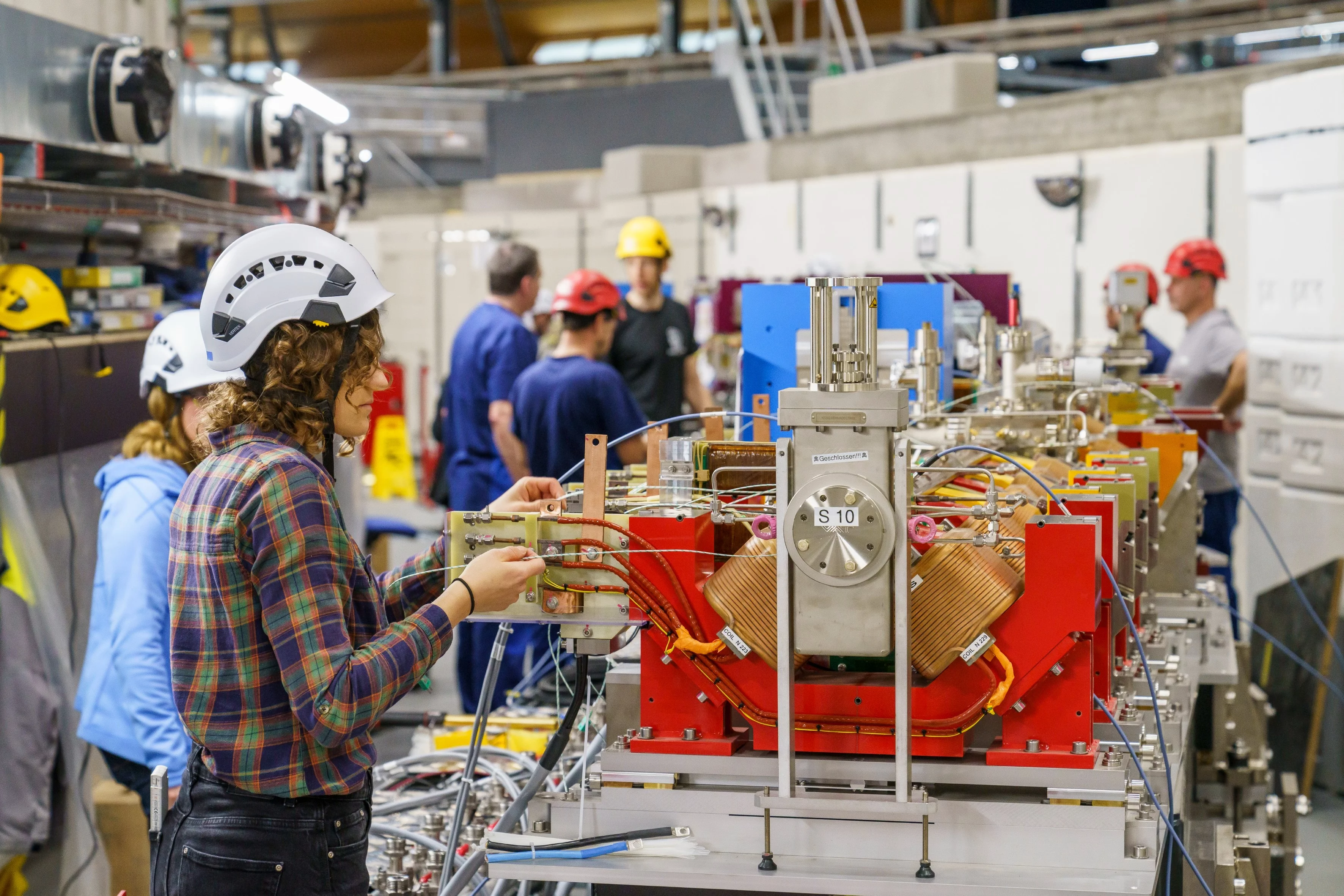Tighter beams, brighter light and extended photon energies open new experimental possibilities. Hans Braun and Phil Willmott delve into the details in Synchrotron Radiation News: here is a short summary.
“The philosophy of the SLS has always been to explore novel techniques and use cutting-edge hardware, which has resulted in breakthroughs in areas such as imaging, X-ray spectroscopies, macro-molecular crystallography and detector technologies,” write Phil Willmott and Hans Braun in an article about the SLS 2.0 upgrade in Synchrotron Radiation News this month.
This philosophy of innovation underpins the comprehensive upgrade of the storage ring and X-ray sources of the Swiss Light Source SLS, which is currently underway.
Better behaved electrons mean brighter X-ray light
The storage ring is the part of the facility where electrons zip around close to the speed of light, generating X-ray light as they go round the bends. The main parameter used to describe the quality of the X-ray light produced is brilliance, which effectively indicates how bright, compact, and well collimated the light is.
For a more mathematical definition, brilliance is defined as the photon flux divided by the emittance – a parameter that describes how collimated the electron beam is and its cross-section in the storage ring. To maximise brilliance, the electron emittance should be as low as possible.
This is the principle of a diffraction limited storage ring (DLSR): reducing electron emittance to the point that it is as small or smaller than that of the X-ray photons. The emittance of the X-ray photons is governed by fundamental diffraction phenomena. The performance of the synchrotron is thus limited by diffraction and no longer by the properties of the electron beam.
The primary way in which this is achieved for SLS 2.0 is with an innovative arrangement of magnets for bending and focusing the electrons. By using more, smaller magnets, these smooth out the curves of the electrons round the storage ring, while keeping them close together.
The new SLS 2.0 storage ring will allow the electron emittance to drop by a factor of thirty-five. With innovative new undulators enabling additional so-called radiation damping, the drop in electron emittance should exceed a factor of forty.
Lower emittance allows further improvements
With dramatically reduced electron emittance, the synchrotron light produced at SLS 2.0 will get a major boost in brilliance. Increased brilliance means more photons in a given area at a given time, enabling researchers to collect more data, faster, and with more precision. Furthermore, it will enable better spatial resolution and finer control over the X-ray beams, allowing researchers to probe smaller samples and structures with higher precision.
With reduced electron emittance a chain of knock-on technological improvements become possible. Notably, it opens the door to innovations at the X-ray sources: the parts of the synchrotron where X-rays are produced from the curving electron beam. With new types of bending magnets and insertion devices, such as undulators, higher photon energies up to approximately 80 keV will become accessible. Access to a broader range of X-ray energies will give researchers new insight into a wide variety of materials and phenomena, from catalysts to biological molecules to magnetic materials.
Improvements to the storage ring and X-ray sources will be complemented by upgrades at the beamlines. Beamlines set to profit particularly include the cSAXS beamline used for ptychography and small-angle X-ray scattering tensor tomography, the TOMCAT beamlines used for tomographic X-ray imaging, the chemistry-focused Debye and SuperXAS twin beamlines and the PX beamlines, which are famous for their protein crystallography experiments.
All in all, the upgrade will lead to the facility producing X-ray beams that serve experiments up to a thousand times better than before. And with such brighter, better beams, we can expect the breakthroughs from SLS to continue.
Text: Paul Scherrer Institute PSI/Miriam Arrell
© PSI provides image and/or video material free of charge for media coverage of the content of the above text. Use of this material for other purposes is not permitted. This also includes the transfer of the image and video material into databases as well as sale by third parties.
Contact
Dr. Hans Braun
SLS 2.0 Project Leader
Paul Scherrer Institute PSI
+41 56 310 32 41
hans.braun@psi.ch
Prof. Dr. Philip Willmott
Scientific Coordinator and Project Leader Photonics SLS 2.0
Paul Scherrer Institute PSI
+41 56 310 51 26
mailto:philip.willmott@psi.ch
Original Publication
SLS 2.0 – The Upgrade of the Swiss Light Source
Philip R. Willmott and Hans Braun
Synchrotron Radiation News, 1. March 2024
DOI: 10.1080/08940886.2024.2312059

